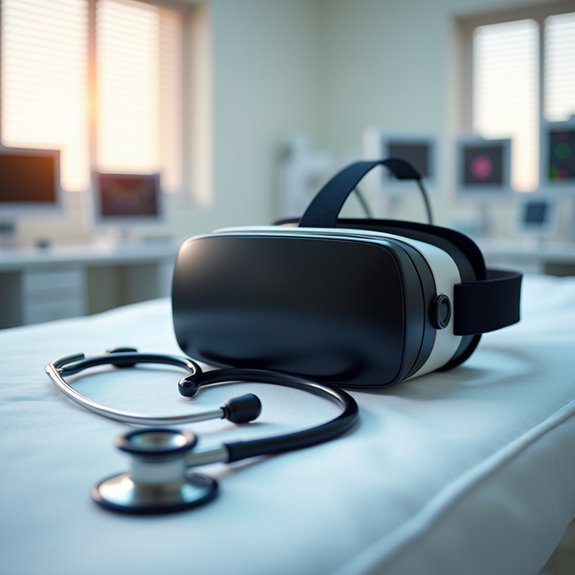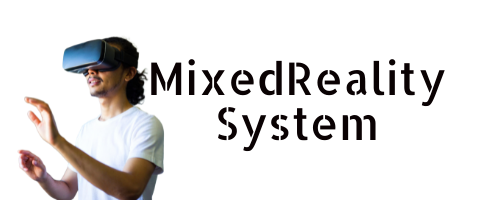Virtual reality is revolutionizing healthcare empathy by letting doctors and nurses literally walk in their patients' shoes. Through immersive VR simulations, medical professionals can experience what it's like to have arthritis, vision problems, or chronic pain, leading to more compassionate care. This technology has boosted informed consent rates by 50% and improved providers' ability to handle sensitive conversations. The growing $33.72 billion VR healthcare market promises even more innovative ways to bridge the empathy gap.

While science fiction writers have long imagined a future filled with holograms and virtual worlds, today's healthcare industry is turning those dreams into reality. Virtual reality (VR) is revolutionizing how medical professionals develop empathy and understanding for their patients, making those sometimes awkward doctor-patient interactions a thing of the past.
Remember that feeling when someone just doesn't get what you're going through? Well, VR is changing that in healthcare by letting doctors and nurses literally step into their patients' shoes. Through immersive simulations, healthcare providers can experience what it feels like to be an elderly person with arthritis trying to open a medicine bottle, or someone with vision problems attempting to navigate a crowded waiting room. Just like Stanford's groundbreaking research showing how immersive VR experiences create lasting empathy compared to traditional training methods. It's like that old saying about walking a mile in someone else's shoes, except now it's happening in a virtual world. The technology mimics embodied simulation, allowing medical professionals to genuinely experience patient perspectives firsthand.
VR lets medical professionals truly understand patient challenges by experiencing their daily struggles firsthand in a virtual environment.
The impact of this technology on healthcare communication has been remarkable. Medical students using VR-based empathy training show significant improvements in their ability to pick up on nonverbal cues and handle sensitive conversations with patients and their families. It's helping them master those tricky moments, like delivering difficult news or explaining complex procedures, with more grace and understanding than ever before. Studies show that VR-enhanced patient education has led to a 50% increase in informed consent rates.
The beauty of VR in healthcare empathy training lies in its versatility and effectiveness. Healthcare providers can experience a wide range of patient perspectives, from chronic pain sufferers to individuals with mental health challenges, all in a safe and controlled environment. This exposure helps create more compassionate, patient-centered care practices that consider the whole person, not just their medical chart.
As virtual reality continues to evolve, its role in fostering empathy in healthcare grows stronger. With the global VR healthcare market projected to reach $33.72 billion by 2027, we're seeing a future where technology doesn't just treat illnesses but helps build stronger, more understanding relationships between healthcare providers and their patients.
It's proving that sometimes the best way to understand someone's journey is to experience it yourself, even if that experience happens in a virtual world.
Frequently Asked Questions
What Is the Average Cost of VR Training Systems for Healthcare Facilities?
VR training systems for healthcare facilities range from $10,300 for basic setups to over $1 million for complex implementations, including hardware costs ($300-700/headset) and software development expenses.
How Long Does It Take Healthcare Staff to Become Proficient With VR Technology?
Healthcare staff typically achieve basic VR proficiency within 2-4 hours, though complete mastery can take 1-2 weeks depending on prior experience and training complexity levels.
Can Vr-Based Empathy Training Trigger Anxiety or Distress in Healthcare Providers?
VR-based empathy training can trigger anxiety and distress through intense emotional scenarios, overwhelming immersion, and lack of environmental control. Healthcare providers may experience emotional exhaustion from repeated exposure.
Are There Cultural Sensitivity Considerations When Developing VR Healthcare Scenarios?
Cultural representation in VR healthcare scenarios requires careful consideration of diverse patient backgrounds, accurate portrayal of cultural practices, and involvement of cultural experts during development to avoid stereotypes and misrepresentation.
How Often Should Healthcare Professionals Undergo VR Empathy Training for Optimal Results?
Healthcare professionals should engage in VR empathy training quarterly, with monthly refresher sessions and additional scenario-specific training when encountering new patient populations or challenging healthcare situations requiring enhanced empathy skills.



Leave a Reply